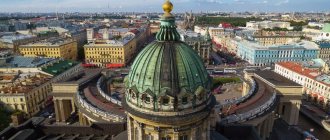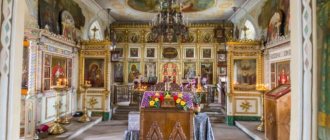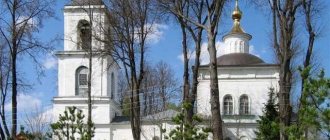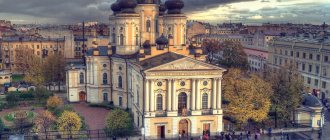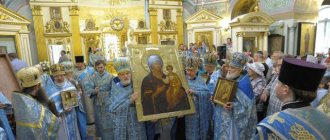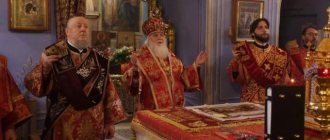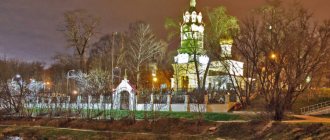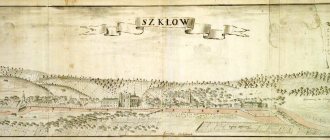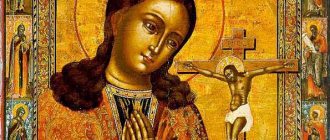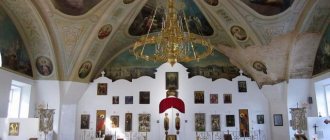Mir
Russia St. Petersburg Cathedral of the Vladimir Icon of the Mother of God (St. Petersburg) Map is loading…
{"format":"leaflet","minzoom":false,"maxzoom":false,"limit":50,"offset":0,"link":"all","sort":[""], "order":[],"headers":"show","mainlabel":"","intro":"","outro":"","searchlabel":"\u2026 \u0441\u043b\u0435\ u0434\u0443\u044e\u0449\u0438\u0435 \u0440\u0435\u0437\u0443\u043b\u044c\u0442\u0430\u0442\u044b","default":"","import-annotation":false,"width ":"auto","height":"350px","centre":{"text":"","title":"""link":"""lat":59.92818100000000214322426472790539264678955078125,"lon": 30.34809489999999954079612507484853267669677734375,"icon":""},"title":"","label":"","icon":"","lines":[],"polygons":[],"circles":[ ],"rectangles":[],"copycoords":false,"static":false,"zoom":8,"defzoom":14,"layers":["OpenStreetMap"],"image layers":[] ,"overlays":[],"resizable":false,"fullscreen":true,"scrollwheelzoom":true,"cluster":false,"clustermaxzoom":9,"clusterzoomonclick":true,"clustermaxradius":80, "clusterspiderfy":true,"geojson":"","clicktarget":"","showtitle":true,"hidenamespace":false,"template":"","userparam":"","activeicon": "","pagelabel":false,"ajaxcoordproperty":"","ajaxquery":"","locations":[{"text":"\u003Cb\u003E\u003Ca href=\"/palomnik/%D0% A1%D0%BE%D0%B1%D0%BE%D1%80_%D0%92%D0%BB%D0%B0%D0%B4%D0%B8%D0%BC%D0%B8%D1%80% D1%81%D0%BA%D0%BE%D0%B9_%D0%B8%D0%BA%D0%BE%D0%BD%D1%8B_%D0%91%D0%BE%D0%B6%D0% B8%D0%B5%D0%B9_%D0%9C%D0%B0%D1%82%D0%B5%D1%80%D0%B8_(%D0%A1%D0%B0%D0%BD%D0%BA %D1%82-%D0%9F%D0%B5%D1%82%D0%B5%D1%80%D0%B1%D1%83%D1%80%D0%B3)\» title=\»\u0421 \u043e\u0431\u043e\u0440 \u0412\u043b\u0430\u0434\u0438\u043c\u0438\u0440\u0441\u043a\u043e\u0439 \u0438\u043a\u043e\u043d\ u044b\u0411\u043e\u0436\u0438 \u0435\u0439 \u041c\u0430\u0442\u0435\u0440\u0438 (\u0421\u0430\u043d\u043a\u0442-\u041f\u0435\u0442\u0435\u0440\u0431\u0443 \u0440\u0433)\»\ u003E\u0421\u043e\u0431\u043e\u0440 \u0412\u043b\u0430\u0434\u0438\u043c\u0438\u0440\u0441\u043a\u043e\u0439 \u0438\u043a\u0 43e\u043d\u044b\u0411\u043e\ u0436\u0438\u0435\u0439 \u041c\u0430\u0442\u0435\u0440\u0438 (\u0421\u0430\u043d\u043a\u0442-\u041f\u0435\u0442\u0435\u0440\u 0431\u0443\u0440\u0433) \u003C/a\u003E\u003C/b\u003E\u003Chr /\u003E\u003Ca href=\»/palomnik/%D0%A1%D0%B2%D0%BE%D0%B9%D1%81%D1%82 %D0%B2%D0%BE:%D0%90%D0%BD%D0%BD%D0%BE%D1%82%D0%B0%D1%86%D0%B8%D1%8F\» title=\ »\u0421\u0432\u043e\u0439\u0441\u0442\u0432\u043e:\u0410\u043d\u043d\u043e\u0442\u0430\u0446\u0438\u044f\»\u003E\u0410\u043 d\u043d\u043e\u0442 "" 0441\u043a\u043e\ u0439 \u0438\u043a\u043e\u043d\u044b \u0411\u043e\u0436\u0438\u0435\u0439 \u041c\u0430\u0442\u0435\u0440\u0438"' \u043f\u043 e\u0441\u0442\u0440\u043e\ u0435\u043d\u0432 1761-1769 0432\u0441\u0430\u043c\u043e\ u043c \u0446\u0435\u043d\u0442\u0440\u0435 \u041f\u0435\u0442\u0435\u0440\u0431\u0443\u0440\u0433\u0430","title":"\u0421\u043e\u0 431\u043e\u0440 \u0412\u043b\u0430\u0434\u0438\u043c\u0438\u0440\u0441\u043a\u043e\u0439 \u0438\u043a\u043e\u043d\u044b \u0411\u043e\u0436\ u0438\u0435\u0439\u041c\u0430 """"lat ":59.92818100000000214322426472790539264678955078125,"lon":30.34809489999999954079612507484853267669677734375,"icon":""}],"imageLayers ":[]}
59.928154; 30.348468
Russia, St. Petersburg, Vladimirsky prospect, 20
Saint Petersburg
Russia
Telephone.:
+7 (812) 312-19-38
Email:
Cathedral of the Vladimir Icon of the Mother of God
built in 1761-1769, located in the very center of St. Petersburg. The names Vladimirsky Prospekt and Vladimirskaya Square come from the Vladimir Church. The temple belongs to the St. Petersburg Diocese of the Russian Orthodox Church and is part of the Central Deanery District.
History[[edit]h2>
The Cathedral of the Vladimir Icon of the Mother of God belongs to the architectural monuments of the 2nd half of the 18th century. The Main Throne of its upper church was consecrated in honor of the Vladimir Icon of the Mother of God, the vigilant and merciful Intercessor of the Russian Land. The Cathedral of the Vladimir Icon of the Mother of God is, as it were, under her grace, which preserved the temple for revival in our time.
Like many St. Petersburg churches, the current Cathedral of the Vladimir Icon of the Mother of God arose on the site of its wooden predecessor. The Church of the Mother of God, the Vladimir Icon, was built in the so-called Palace or Court settlements located behind the Fontanka, in the area of modern Vladimirsky and Zagorodny Avenues. It was founded in 1746 in the house of F. Yakimov, where a camp iconostasis was installed. The arrival of the first wooden five-domed church, built from the wooden building of the Church of St. Sergius purchased in 1747 through the efforts of the chief marshal of the imperial court D. A. Shepelev and the commissar of the department of the main palace chancellery F. Yakimov, was made up of the ranks of the court department stationed in this part of the city. It was the wooden Vladimir Church that became the first, erected after the historical “oral decree” of Empress Elizabeth Petrovna, given to Baron I. A. Cherkasov, manager of the Cabinet of Her Imperial Majesty, on the construction of churches with five chapters “in such a similarity as in Moscow, at the Assumption Cathedral” .
Founded and consecrated in 1747, the wooden church in honor of the Vladimir Icon of the Mother of God in a certain sense became the prototype for subsequent church construction in the northern capital.
On August 25, 1748, in the new wooden church, Archbishop Theodosius consecrated a throne in the name of the Vladimir Mother of God. The day after the consecration, on the temple holiday, Empress Elizaveta Petrovna was present at the Liturgy in the newly consecrated church, who donated 300 rubles to the benefit of the temple. A year later, another throne was built in the church refectory in the name of St. John of Damascus, whose namesake was the head of the court settlements, the above-mentioned manager of the Cabinet of Her Imperial Majesty, Baron I. A. Cherkasov, who also donated his funds for the construction of the church
In 1756, Elizaveta Petrovna, yielding to the requests of parishioners, allowed the inhabitants of the court settlements to collect money for the construction of a stone church. A big role in this matter was played by the priest of the Vladimir Church, John Kirikov, whom many years later the old-timers would even call the builder of the stone church. Father John Kirikov was the main fundraiser, who more than once went to both Novgorod and Moscow with special books to collect donations for the construction of the temple.
Plans and drawings of the new church were ready already in 1759, but laying of the foundation began only on August 20, 1761. After 8 years, the construction of the first floor of a stone temple with three altars was completed. The middle altar in the name of St. John of Damascus in the lower floor of the temple was consecrated on November 8, 1768 by Archbishop Gabriel of Kremenets; the following year, the same eminence consecrated both side altars - on the south side in the name of St. Hieromartyr Harlampy (February 22), and on the north - but the name of St. Prophet Elijah (June 30). The church on the top floor with a throne in the name of the Vladimir Mother of God was finally built in 1783 and was consecrated by Metropolitan Gabriel on April 9, 1783. In the same year, according to the design of the architect D. Quarenghi, the construction of a separate three-tier bell tower was completed. Archival documents did not preserve the name of the architect who designed the stone temple. According to legend, the original project is attributed to the famous architect B. F. Rastrelli. The creation of the final architectural image of the church is associated with the names of the architects of the 19th century—A. I. Melnikova, A. Golma, A. I. Rusko.
In terms of its architecture, the Cathedral of the Vladimir Icon of the Mother of God is a two-tier cross-domed, tetrameter, five-domed, two-story building, with three porches and an apse. The main volume of the cathedral has a square plan with cut corners. From the west, the main volume is adjoined by a refectory room and a vestibule with stairs. Leading to the second floor. The domes of the temple rest on tall round drums topped with onions. The middle drum is topped with a bell-shaped dome. The exterior decoration of the temple is made in Baroque style. The facades are decorated with Corinthian columns, the window openings are decorated with stucco decoration, and the northern and southern facades are decorated with broken arches. On the northwestern and southwestern corners of the site there are stone chapels, also made in the Baroque style. To the north of the cathedral building there is a bell tower, the facades of which are designed in the style of classicism. The bell tower is completed with a dome with a lantern. The elevation of the belfry is 40.5 m, the base of the cross is 64.1 meters from the surface of the earth.
The cathedral and bell tower play an important urban planning role. The building of the Cathedral of the Vladimir Icon of the Mother of God, monumental in size, closes the perspective of Zagorodny Prospect and to this day retains the significance of the architectural dominant of the Vladimir Square area.
The interior of the Upper Temple is defined by massive pylons, stucco decoration at the base of the dome, bas-reliefs of evangelists in sails, which, according to experts, belonged to one of the leading sculptors of that time. The lower part of the temple is squat with a low vaulted roof and massive ceilings, illuminated by the windows of the side ships. The interior of the lower part of the temple, including the iconostasis of the three altars, has not been preserved.
The main decoration of the upper church is the iconostasis of the main altar in the name of the Vladimir Icon of the Mother of God, which miraculously reached our days from the depths of the 18th century and belongs to the unique works of church art, the surviving number of which now does not exceed several dozen throughout Russia. A monument of architecture, icon painting, sculpture and decorative arts, created in the middle of the 18th century according to the design of the brilliant B. F. Rastrelli by the best masters of the Elizabethan era, the iconostasis in its main details has been preserved in its original form, unlike many other iconostases of this architect, lost and restored again in the first half of the 19th century. The iconostasis of the Cathedral of the Vladimir Icon of the Mother of God is an example of a work of genuine St. Petersburg baroque style. The iconostasis is decorated with icons on the front and inner altar sides. The front iconostasis turned into the parish part of the church probably came to the cathedral from the so-called Cabinet Church of the Anichkov Palace after its closure in 1809 or 1810.
In 1868, a new altar was built in the northern side of the upper church in the name of the Mother of God, Joy of All Who Sorrow. In 1872, another throne was built on the southern side of the upper cathedral - in the name of the holy great martyrs Vera, Nadezhda Lyubov and their mother Sophia. This altar was built with funds donated to the cathedral by the hereditary honorary citizen I.P. Lesnikov and consecrated by His Eminence Metropolitan Isidore. After this, the Vladimir Cathedral became a six-altar church.
The temple was closed in 1930 and its premises were given over to the book collections of the State Public Library to house its branch, the Anti-Religious Library, and then also to a construction trust. After the war, the temple, which withstood the blockade, was again transferred to the storage of books of the Library of the Academy of Sciences, and in 1947 to the Lenpromkombinat Fizkultpromsnab for knitting production.
In August 1989, after 60 years of alienation and desolation, the Cathedral of the Vladimir Icon of the Mother of God was transferred to the Leningrad Diocese by decision of the Leningrad City Executive Committee. Prominent secular St. Petersburg residents also contributed to the return of the cathedral - scientist, historian and writer, Russian patriot L. N. Gumilyov and Honorary Citizen of St. Petersburg D. S. Likhachev, one of whose ancestors was the headman of the temple.
On April 7, 1990, on the Annunciation, the church was consecrated by Metropolitan Alexy of Leningrad and Novgorod (Patriarch of Moscow and All Rus' (Ridiger), who became rector of the Cathedral of the Vladimir Icon of the Mother of God. At the same time, Candidate of Theology, Mitred Archpriest Father Vladimir Fomenko was appointed clergyman of the church . Continuing the established tradition, the subsequent rector of the church was Metropolitan John (Snychev) of St. Petersburg and Ladoga. From 1996 to the present, the rector is His Eminence Vladyka Vladimir (Kotlyarov) Metropolitan of St. Petersburg and Ladoga. The parish staff of clergy consists of five priests, three deacons and one psalm-reader.
From August 1991 to the present, the chairman of the parish council is Ivan Sergeevich Raevsky. During this period, work was completed; installation of 8 gilded crosses on the domes of the cathedral and chapels, the upper church was restored. The main domes of the cathedral were covered with copper sheets, as well as the dome of the bell tower, the domes of two chapels with restoration of their facades. The interior of the upper church of the Vladimir Icon of the Mother of God has been updated. Archimandrite Simon consecrated the right side chapel in honor of the holy great martyrs Vera, Nadezhda, Lyubov and their mother Sophia.
What does the Cathedral look like inside?
A distinctive feature of the decoration is sophistication and simplicity. On the walls , decorated with pilasters, the four Evangelists are depicted by Bryullov’s hand. On the western side of the temple there are amazing copies of paintings by Raphael and Paolo Veronese. In the upper building, an iconostasis has been preserved, in which there are about 30 sacred icons. Rastrelli created a unique creation in the 18th century, placing the Holy Faces on both sides of the altar.
mane_tanya
ludmilabtt
anastasiia_0012
The main revered miraculous icons of the temple:
- Vladimir Mother of God
- Savior Not Made by Hands - she was consecrated by the righteous John of Kronstadt;
- The face of the Great Elder Seraphim of Sarov with incorruptible parts of his relics.
To the right of the list of the Kazan Icon there is a wooden iconostasis made in the Empire style , decorated with artistic carvings . The altar is painted with a copy of the composition Holy Eucharist by Vasnetsov.
Schedule of services[[edit]h2>
Divine services are held in the cathedral every day.
At 9:00 – Liturgy. On Sundays and twelve feasts, two Liturgies are celebrated, at 7:00 and 10:00. Confession begins half an hour before the start of the Liturgy.
At 18:00 – all-night vigil.
At the evening service akathists are sung:
On Monday, Akathist to St. Seraphim, the Wonderworker of Sarov;
on Thursday - Akathist to St. Nicholas, Peace of the Lycian Wonderworker;
on Sunday - akathist to Jesus Christ and the Most Holy Theotokos (alternately).
The schedule of services is regularly updated on the temple website.
Interesting Facts
- The cathedral is famous for its children's choir , whose singers are known far beyond Russia for their angelic voices.
- A school of virtuoso bell ringers has been opened at the cathedral ; they are taught complex bell ringing techniques.
- The history of the temple is connected with many famous parishioners. A. S. Pushkin’s parents lived near the square where the temple is located and often attended divine services. Alexander Sergeevich himself often visited his relatives and went to the Vladimir Church for Liturgy.
- The funeral service for Pushkin's nanny and his friend Delvig took place in the Vladimir Cathedral , which was attended by the poet.
- To this day, memorial services are held in the church for F. M. Dostoevsky , who lived in Kuznechny Lane and was a diligent parishioner of the Vladimir Church.
Prince Vladimir Cathedral in St. Petersburg. Opening hours 2018
Briefly about one of the most beautiful churches in St. Petersburg: Prince Vladimir Cathedral. Basic information: opening hours, address, telephone numbers.
Mode, address, telephones
Cathedral opening hours 2021:
Monday, Tuesday, Thursday, Saturday: from 10:00 to 20:00
During fasting periods the temple opens from 09:00
Wednesday, Friday : from 09:00 to 20:00
Sunday: from 07:00 to 20:00
On secular holidays: from 07:00 to 20:00
During Orthodox holidays, we recommend that you find out the schedule of services by calling the numbers listed below.
Address:
St. Petersburg, Blokhina street, building 26
Phones:
+7; 233-68-56; 233-54-04
Metro: “Sportivnaya”, “Petrogradskaya”
Cathedrals of St. Petersburg, list
History and photos
Short story:
This temple is one of the first cathedrals in St. Petersburg and was the fourth in a row, losing the palm to Peter and Paul, St. Isaac's and Trinity-Petrovsky. According to the information that the site authors managed to find, the first small wooden church of St. Nikola appeared conditionally on this place in 1708.
The first wooden church was erected by 1717, and the main building was consecrated on April 5, 1719 . in honor of the Dormition of the Mother of God ( Uspensky ). On the same day, Peter I, who was present at this event, ordered that the temple be awarded the status of cathedral.
| Years of construction: 1st stage | 1740 - 1742 |
| Architects: | M. G. Zemtsov and P. A. Trezzini |
| At the direction: | Anna I Ioannovna |
| Years built: Stage 2 | 1776 - 1773 |
| Architect: | Antonio Rinaldi |
| Years built: Stage 3 | 1783 - 1789 |
| Architect: | Ivan Egorovich Starov |
| Reign time: | Ekaterina II Alekseevna |
| Architectural style: | Russian Baroque |
On October 1, 1789, the cathedral was consecrated in honor of Prince Vladimir.
Photos:
Prince Vladimir Cathedral in St. PetersburgPrince Vladimir Cathedral, interiorPrince Vladimir Cathedral, service
Source: https://1703piter.ru/knyaz_vladimirskii-sobor-v-peterburge_-rejim-raboti_-adres/
Icon of the Virgin Mary
One of the main shrines of the temple is a copy of the famous image of the Mother of God of Vladimir.
This icon came to our country from Byzantium. In the 12th century, the Greek Metropolitan Michael from Constantinople came to Kyiv and gave it to the son of Vladimir Monomakh, Prince Mstislav Vladimirovich. The revered image was placed in the Mother of God monastery in Vyshgorod, which was located not far from Kyiv.
In 1155, the son of Yuri Dolgoruky, Andrei, transported the icon to his home in Bogolyubovo, and then to the ancient Assumption Cathedral in Vladimir. This is how the ancient icon got its name - “Vladimirskaya”.
Bell tower of Vladimir Cathedral
During the reign of Vasily I, Tamerlane's troops attacked Rus'. To save the shrine, it was hastily transported to Moscow. In the place where the meeting of Muscovites with the icon took place, or, as they said then, “the meeting,” the Sretensky Monastery was founded. For unknown reasons, the warlike Tamerlane refused to capture Moscow and, having reached Yelets, turned back.
Muscovites regarded the miraculous salvation as the intercession of the Mother of Christ, and the icon turned into one of the main Orthodox shrines. In 1930, the original was transferred to the Tretyakov Gallery. Today, the revered image is exhibited in the Church-Museum of St. Nicholas the Wonderworker in Tolmachi, which has the status of a house church at an art gallery.
